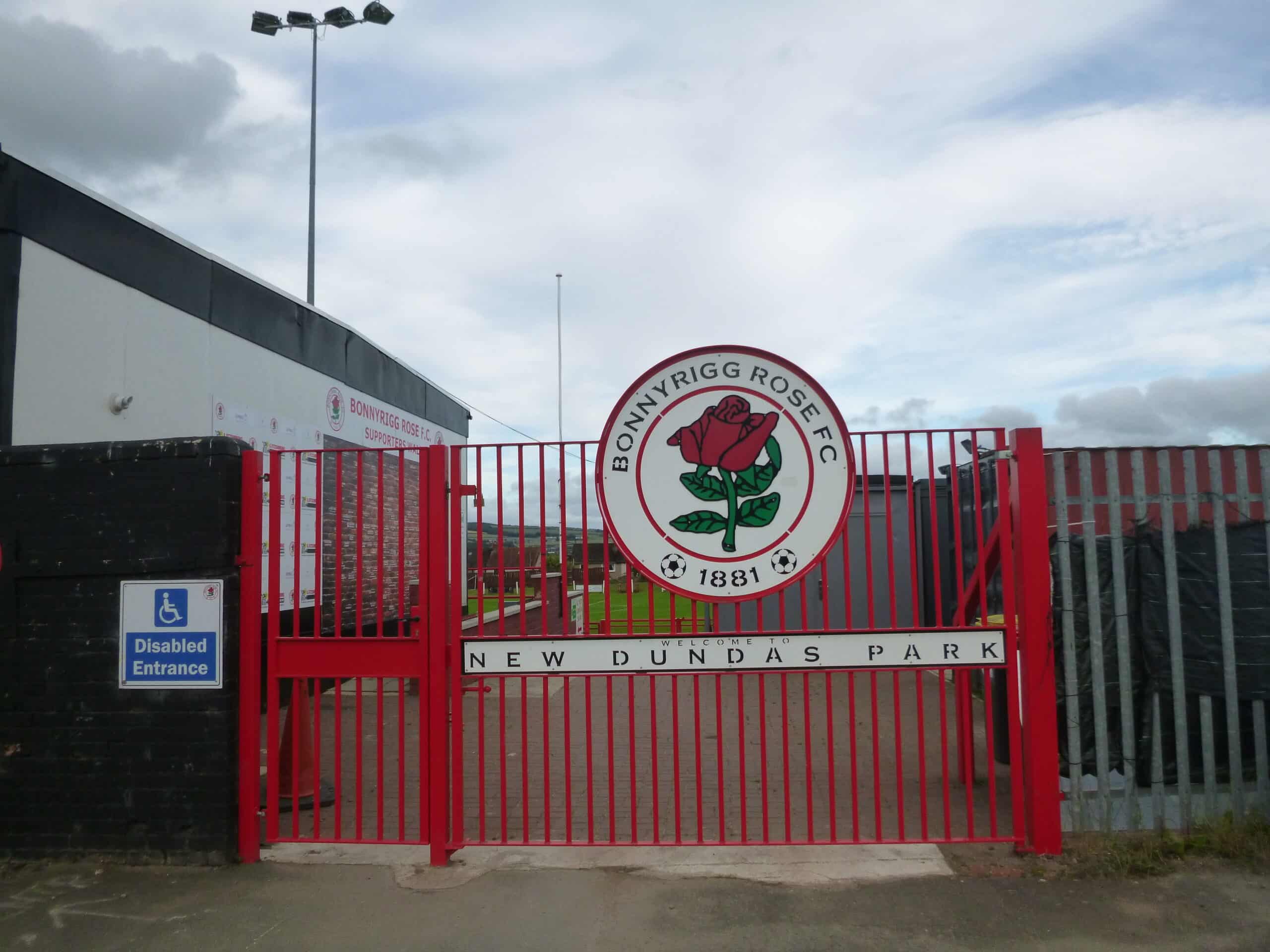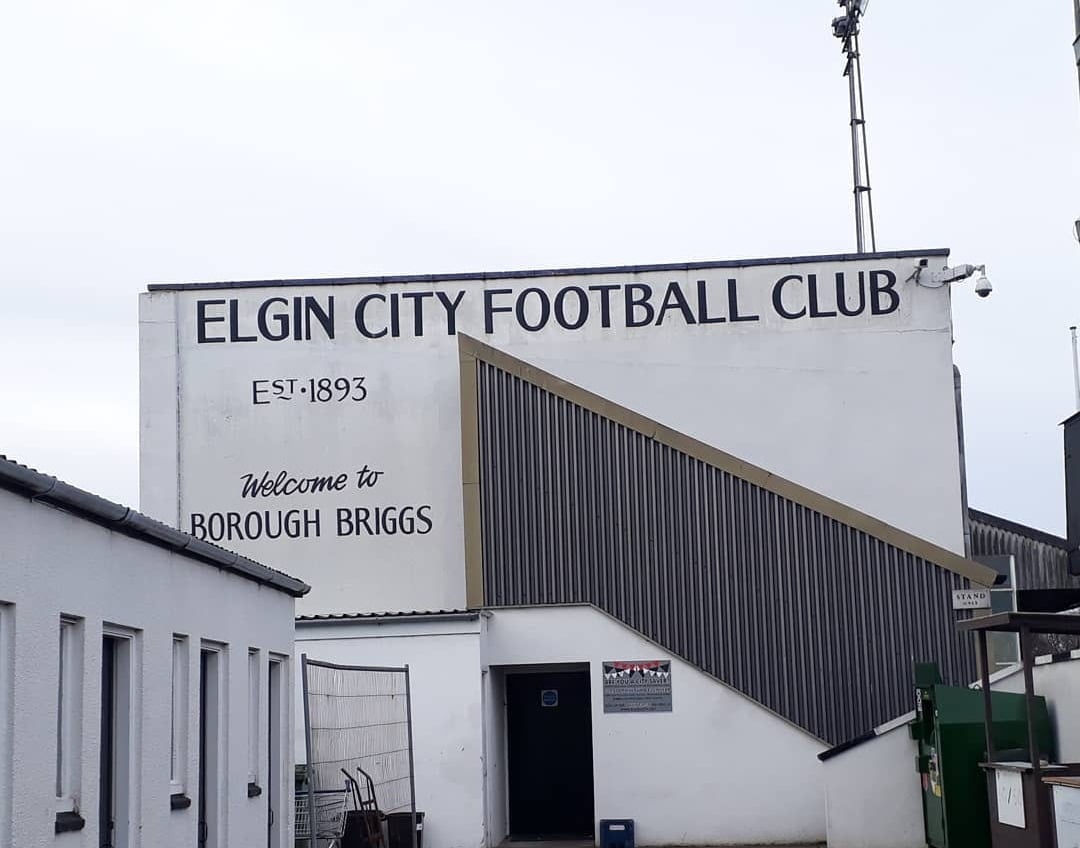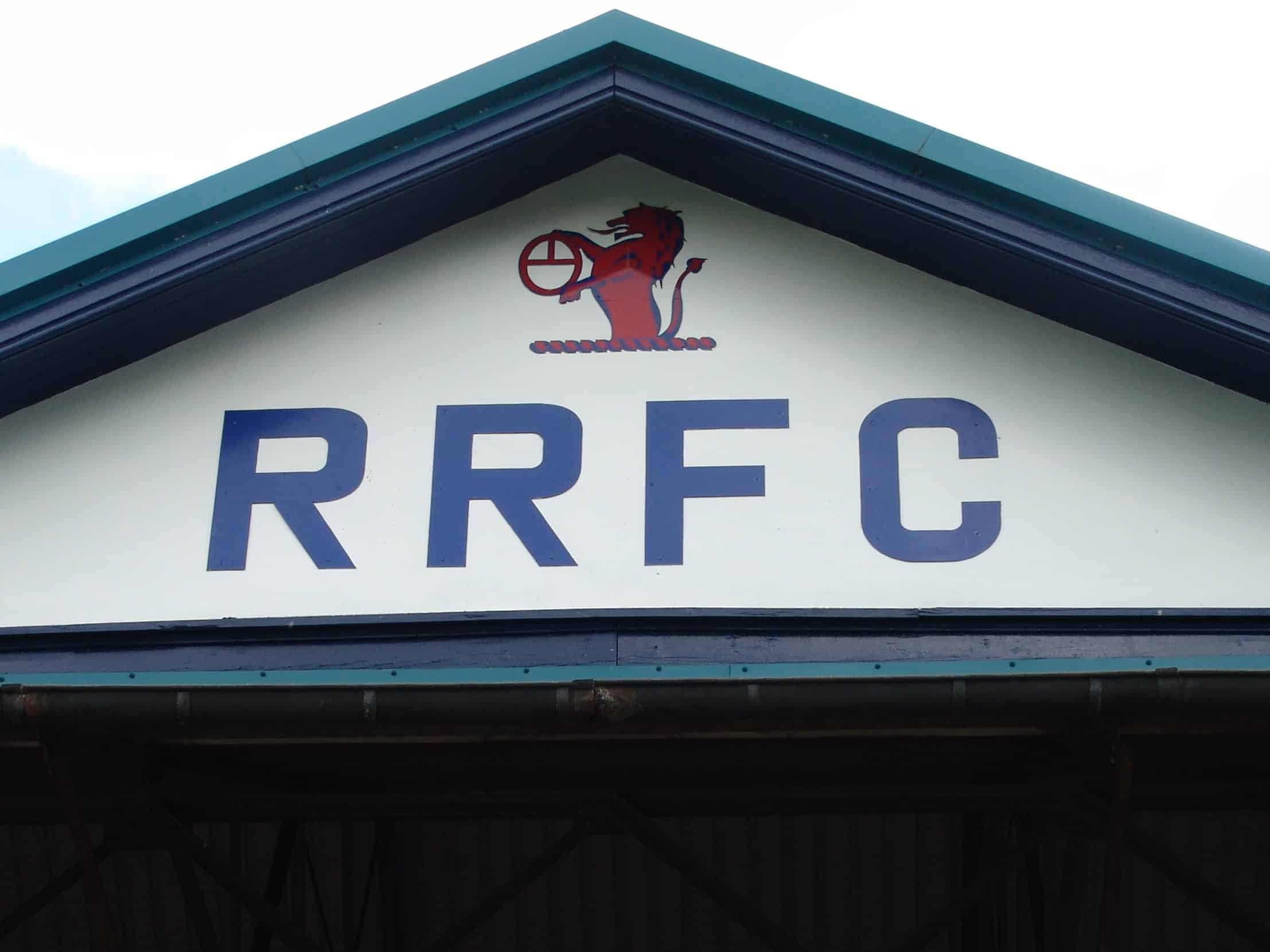A fan’s guide – the club from early doors to today
Scotland’s first ever champions, Dumbarton FC had their heyday in the late Victorian era. The century-long decline of the Sons was reflected in the slow decay of their equally venerable but ramshackle stadium, Boghead Park.
In 2000, Dumbarton moved to a pitch at the foot of Castle Rock, the historic local landmark that gave the club its full nickname. The Sons of the Rock slowly rose from fourth tier to third then, in 2012, to the Championship.
The ambitious club duly submitted a proposal to build a new ground altogether, moving away from this one-stand venue, despite its grand setting, for a site across the River Leven at Young’s Farm beside Renton Road.
Birmingham-based private equity firm Cognitive Capital took over the club in May 2021, scrapping the plans turned down by West Dunbartonshire Council in 2018 anyway, and worked on redeveloping The Rock. This included, much to fans’ dismay, a housing development in the stadium car park. The Sons, meanwhile, sank to League Two in 2022.

Dumbarton FC were formed in 1872, making them the fourth oldest in the current Scottish League. Entering the inaugural Scottish Cup in 1873, the Sons went out two seasons running to local rivals Renton, both times after a replay, then lost in the final to Queen’s Park in 1881.
First playing at Townend then Meadow Park, later home of lesser and short-lived city rivals Dumbarton Harp, Dumbarton FC moved to Boghead Park in 1879. By the time they left it for the Rock, the stay had become the longest continuous one in Scottish football.
Runners-up again in 1882, Dumbarton at last won the cup a year later in front of five-figure crowds at Hampden Park, the tie requiring a replay. West Dunbartonshire rivals Vale of Leven held the Sons 2-2 in the first game before Dumbarton’s Browns, Robert ‘Plumber’ and Robert ‘Sparrow’, no relation but both Scottish internationals, scored the two decisive goals in the second match.
The Sons followed this by winning the inaugural Scottish League in 1891 – at least on paper. Finishing higher than Rangers on goal average – four 5-1 wins at Boghead Park would have helped – the Sons were nevertheless forced into a play-off. A 2-2 draw saw the first Scottish title shared. Dumbarton made no mistake in 1892, beating Celtic by two points. In both seasons, Jack Bell, later of Everton and Preston, was top league scorer.

And that, apart from rare divisional titles, 20 Dumbartonshire and 16 Stirlingshire Cups, accounts for the entire achievements of Dumbarton FC over a century and a half.
In 1922, Dumbarton fell out of the top flight and wouldn’t return for 50 years. Promotion came under manager Jackie Stewart – no relation to the Dumbarton-born racing driver of the same name – but the subsequent highest league placing in modern times, a top-tier tenth in 1974, was thanks to his former assistant, ex-Partick Thistle stalwart Alex Wright. In his side was Willie Wallace, previously a Lisbon Lion European Cup winner with Celtic, and the McAdam brothers who later played on different sides for Celtic and Rangers in the same seasons.
This was the last great Dumbarton side, although Wright’s nurturing of Graeme Sharp and Murdo MacLeod, both later Scottish internationals with Everton and Celtic respectively. Ironically, it was after their departure that Dumbarton made the Scottish Premier for the last time to date, in 1984. At the helm was ex-Rangers star Davie Wilson, who had played for the Sons in their last promotion year of 1972.
In 1984-85, Wilson’s team scrapped for creditable draws, away at Rangers and at home to Celtic, but it was always a losing battle. Wright stayed at the club in various capacities for nearly two decades but the rot had set in.
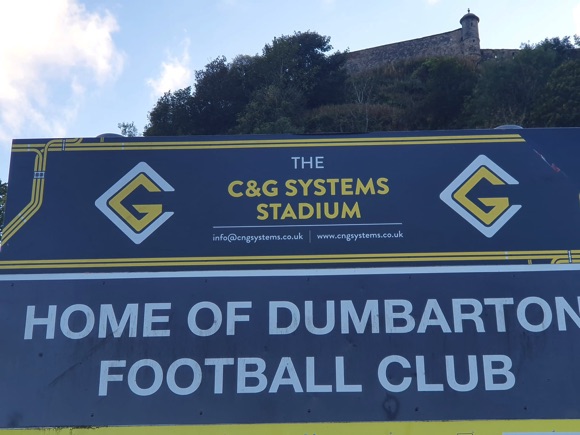
Mainly playing in the third flight from 1988, Dumbarton tried various managers, including MacLeod and another old boy, former Forest striker Ian Wallace, but the Sons were rooted to the lower half of the League. Boghead Park was an ageing relic with little to recommend it save for quirks such as a stand roof which previously kept passengers dry at Turnberry railway station.
The ground was sold for housing development and Dumbarton moved below the Rock near where the Leven meets the Clyde. A more dramatic setting would be hard to find. Equally positively, in a then pioneering move, a supporters’ trust won a seat on the board and began to play a role in the running of the club.
Eventually it bore results. Under former Scotland Police XI midfielder Alan Adamson, the Sons at last made the play-offs for a place in the second tier in 2012. With goals from Bryan Prunty, whose spectacular strikes won him end-of the-season awards, Dumbarton overcame Arbroath, and then Airdrie, to reach the second flight for the first time in nearly two decades.
After a shaky start, and Adamson’s dismissal, Dumbarton managed to stay in the Championship for five seasons, attracting crowds approaching 2,000 for the visits of Rangers over two seasons. Relegation in 2017 followed a heartbreaking play-off defeat to Alloa after extra-time, the Wasps having levelled the aggregate in stoppage time.
Beating Edinburgh City in the play-off to stay in League One in 2021, Dumbarton were comprehensively beaten by the Citizens at the same stage a year later. Keeping faith with award-winning manager Stevie Farrell, the Sons made the promotion play-off in 2023 but still seek a way out of League Two. Fans, meanwhile, are equally none too pleased about the proposals of new owners Cognitive Capital to build a housing development on the stadium car park.




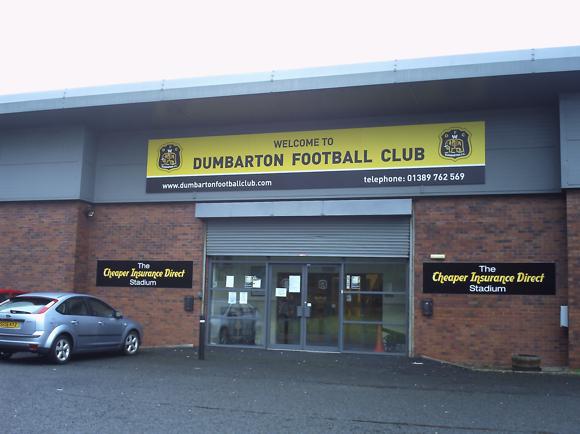
Ground Guide
The field of dreams – and the story behind it
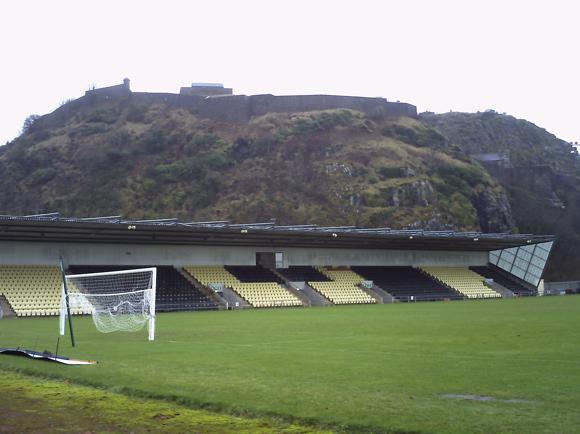
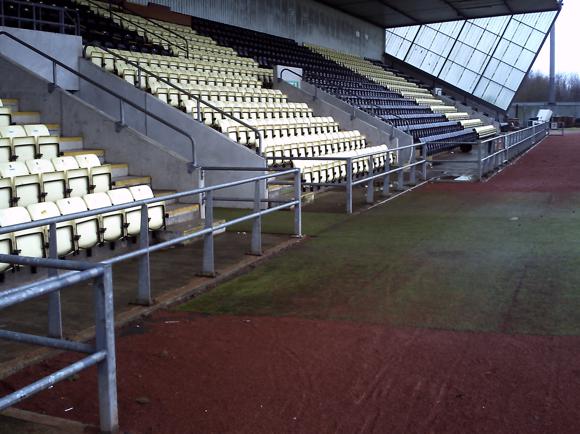


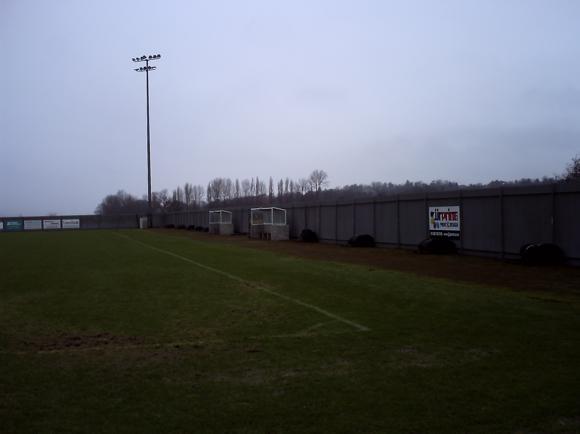

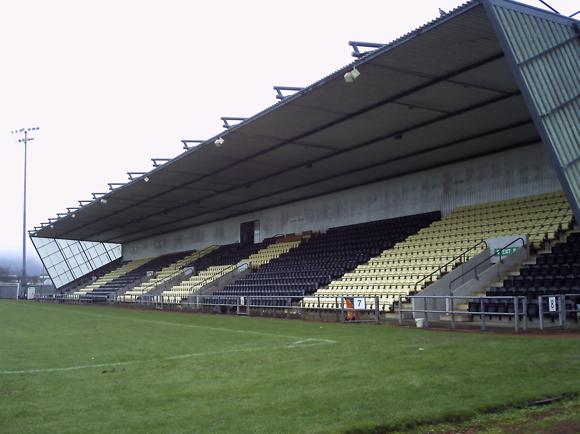
Dumbarton Football Stadium is currently referred to as the… Dumbarton Football Stadium, the long line in not-so-snappy sponsors’ names having dried up despite the club desperately needing cash to improve and expand on this modest, single-stand ground.
Everyone, however, refers to it as the Rock, ever since the Sons moved there in 2000. The ground is unusual in several ways, starting with its stunning location, beneath a great big hump of volcanic basalt, its vantage point at the confluence of the Leven and Clyde rivers attractive to some of most famous figures in Scottish history.
Set against this, the stadium comprises one single stand and an expanse of pitch. In fact, calling it a stadium, whether you were Strathclyde Homes, DL Cameron, BetButler or Cheaper Insurance Direct, is somewhat of an exaggeration.
The entire crowd, usually around 600 now that the Sons are fourth-tier, gathers in this one stand, home and, in sections 1 and 2 at one end of it, away.
As three-quarters of this uniquely located space lies shorn of any features other than landscape, the club began looking at a new location for a 4,000-capacity ground halfway between Dalreoch (Dumbarton’s third rail station) and Renton north-west of town. The search ended with West Dunbartonshire Council poo-poo’d the project, and incoming owners Cognitive Capital kyboshed it for good.
Capacity at the Rock is 2,000, all-seated, with welcome windshields on either side.
getting here
Going to the ground – tips and timings

The stadium is about a 10min walk from Dumbarton East, with direct, regular train connections to Glasgow. From the station, head over Glasgow Road alongside, then take the second left, Victoria Street – the stadium is about 500 metres further down, on the right.
From Dumbarton High Street, either take buses 1B, 208, 218 or 340 for two stops to Leven Street, which you follow round past Morrisons to the junction with Victoria Street – or walk the 15mins up High Street/Castle Street, past the Scottish Maritime Museum, onto Glasgow Road then down Leven Street.
The sat nav code for the Dumbarton Football Stadium is G82 1JJ. For the time being, the club has its own fair-sized car park, fee £3 – although this could be in jeopardy should the owners decide to build houses on it. For the time being, your £3 also gets put into the 50/50 half-time draw.
TICKETS & SHOP
Match-day admission and merchandise

Advance tickets can be bought online through the club website, with entry for all home games usually available.
Admission is otherwise pay-on-the day through turnstiles 1 and 2, cash-only. It’s £17, £11 for seniors, £5 for under-16s.
Merchandise is sold at the ground on match days. The current version of the home shirt features a single vertical band of yellow and black stripes down the badge side, on white.
À propos that badge, the elephant represents the volcanic rock under which the stadium now sits. Note, too, the castle on top. You might be able to pick up the kit created for the club’s 150th anniversary in 2022-23, the yellow-and-black band a hoop across the chest.
The current away kit is black with elements of lurid pink, never a great idea on a football shirt, while that badge also features on coasters, hip flasks, pens and pencils.
Where to Drink
Pre-match beers for fans and casual visitors
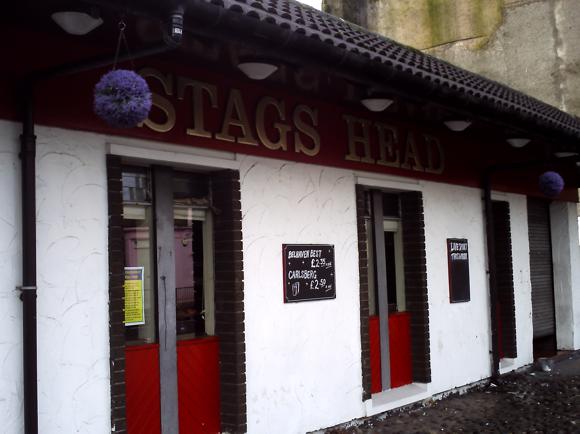


The main pre-match pub, the Stag’s Head, right by Dumbarton East station, closed in July 2023 after 50 years of serving fans home and away.
The more intrepid now venture into town, to the eastern end of the High Street – the bus stop is right there for services to Glasgow Road if you’re cutting it too fine to walk. As its name suggests, the Counting House is set in a former bank, today a large, airy, Belhaven pub/eatery with plenty of TV sport. Next door, The Clipper also closed in 2023.
Nearer the ground, the bar at the Dumbarton Rock Bowling Club on Castle Road should welcome sensible drinkers on match days. At the ground, the recent revival of the Bar 72 has been a positive development at DFC. Fan-run, with profits going back into the club, it welcomes home and away supporters on match days. Cash-only.











